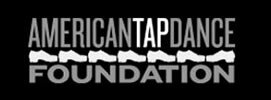Tap Teacher Training FAQs
What are the requirements to attend the Tap Teacher Training?
TTT Level 1 participants must be 18 years or older, must tap dance on an Advanced or Intermediate level, and must be able complete the work of Session 2. The work of Session 2 includes teaching Beginning Level tap dancers in your home community for a minimum of 40 hours (usually a minimum of two hours per week for six to nine months following the Intensive Week of Session 1). Trainees who do not currently have a regular teaching schedule must set up their own beginning level groups to practice TTT concepts.
I already know many Copasetic dances. Would the Training still be useful for me?
Absolutely! Only a portion of the training is devoted to learning repertory. The rest of the training is devoted to the rhythmic, technical, musical and stylistic lessons inherent in the Copasetic repertory, and skills teachers need to bring these tap concepts to their students.
What makes the ATDF Tap Teacher Training different?
ATDF Tap Teacher Training and Copasetic Canon Curriculum are based in the idea that tap is both music and dance. While tap can work beautifully with all types of music, tap dance is fundamentally an expression of jazz music. We introduce basic jazz music concepts in fun and easy ways for you and your students. Trainees learn how these classic tap dances are rooted in jazz music, learn to understand the jazz rhythms and structures in tap, how to select engaging and accessible jazz recordings for your classes, how to teach your students to listen, count and think like musicians—with their feet.
Why are the dances of the Copasetic Canon important?
The “Coles Stroll,” “Copasetic Soft Shoe,” “Shim Sham,” Bill Robinson’s “Doin’ the New Low Down,” the “BS Chorus,” and other dances, were some of the works performed by the Copasetics. This classic tap repertory has become a central component of the ATDF youth and adult education curriculum. The material builds a solid and progressive foundation for beginning through advanced tap students and provides essential lessons in rhythm tap:
Solid tap technique
Learning to count a bar (measure) of music
The structure of 8-bar phrases
Learning how a 2-bar break is used
Structure of a chorus: understanding AABA
Swing rhythms and triplets
Use of the body, weight change and gravity
Full-body rhythmic expression and style
Tap history
Am I required to start with Level 1? How many levels are there?
The Level 1 Training is offered every year and introduces teachers to a wealth of foundational concepts. After completing Level 1, graduates may participate in any Upper Level Training, in any order: ”Copasetic Canon” (teaching Advanced Beginners), “Composition & Styling” (teaching Intermediate), “Rhythm Tap Is Music” (teaching all levels and composition skills).
The course “Pre-Tap and Early Tap Curriculums” 9teaching 3-5 yearolda) has no pre-requisite.
Is the ATDF certificate is recognized nationally and internationally?
Trainees who successfully complete the Tap Teacher Training are awarded a certificate issued by the American Tap Dance Foundation. Though the certificate is not endorsed by any other institution or educational entity, it does carry the internationally recognized reputation of the American Tap Dance Foundation, of Artistic Mentor Brenda Bufalino, Executive Director Tony Waag, and of our expert faculty. For over 25 years, the ATDF has proved itself as an international leader in rhythm tap, with a sustained level of excellence in our mission of rhythm tap education, presentation of tap artistry, preservation of tap dance heritage, and support for the creation of new, cutting edge choreography. To be clear, the ATDF Tap Teacher Training Program does not award “teaching certification” that is recognized on the state or federal level. Students who seek certification that qualifies them to teach in a public school should refer to their state Department of Education for requirements. International students should consult with the education entities in their home countries for local standards and requirements.
Can I get college or graduate credit from a university by attending the Training?
At this point, the ATDF Tap Teacher Training is not affiliated with a university program, and this training would not automatically count towards college or graduate school credits. But, if you are currently enrolled in a college or university, one option is to petition your academic institution for permission to do an independent study. The ATDF could provide support materials showing the rigor of our program and the ATDF faculty mentorship. It would be between you and your institution of higher education to negotiate whether they would accept the proposal and award you academic credit.
I’m an international student. May I attend the Training?
Absolutely! Tap dancers from all over the U.S. and the world will be accepted into the Training.
English is not my first language. Is there a fluency requirement?
Students in the Tap Teacher Training must be fluent in written and spoken English. If you have questions, contact Co-Director Margaret Morrison.
I’m an international student. What type of visa do I need? Can I get a letter of invitation from the ATDF to apply for a visa?
If you are not a U.S. citizen or resident, you will need to travel as a tourist to New York City for the Training. The ATDF is not an accredited institution and does not support applications for a student visa. Consult with the U.S. Consulate or Embassy in your country to determine if the U.S. requires you to apply for a tourist visa to visit. If you need support material from the ATDF to apply for a tourist visa, contact us. We can supply that for registered students who have paid their tuition deposit.
